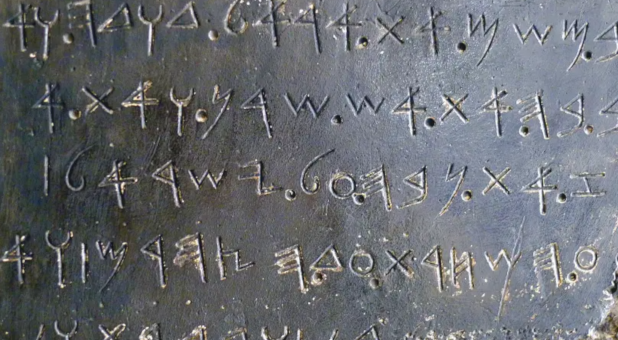Researchers Discover Yet More Physical Proof of the Bible’s Legitimacy
Read Time: 2 Minutes 13 Seconds
While many scoffers and skeptics would like to push aside the Bible as a “fairytale” or as “fantasy,” researchers continue to discover physical evidence that the Word of God is indeed true.
The Moabite Stone, also referred to as the Mesha Steele, was recently determined to contain explicit references to King David, the Jerusalem Post reported. The basalt stone slab was discovered in fragments in 1868 roughly 15 miles east of the Dead Sea and has been residing in the Louvre museum in Paris.
Until now, scholars couldn’t be entirely certain that the references on the tablet to King David were being correctly deciphered. That is no longer the case.
Researchers are also continuing excavation of the Pool of Siloam, a place where Jesus healed a blind and that has long been considered a sacred site to Jews and Christians.
While the Moabite Stone was damaged in 1869, reports say, a paper mache impression of the inscription was captured before the damage occurred.
The Moabite Stone is etched with a lengthy account of King Mesha of Moab going to war with Israel. The events described correspond, albeit imprecisely, with a similar account in 2 Kings chapter 3, the Jerusalem Post Reported.
The text of the slab also contains references to the Israelite god as well as the “House of David” and the “Altar of David.”
The Jerusalem Post reported that “The Moabite phrase “House of David” consists of five letters: bt dwd. “Bt” is similar to today’s Hebrew word for house—bayit—which is beit in its construct form. And “dwd” can be thought of like modern Hebrew’s daled vav (the letter, in this case, is actually waw) daled which spells the name “David.”
Until now, only the first and fourth letters of the series, bet and waw were completely clear.
In a late-2022 article entitled ‘Mesha’s Stele and the House of David’ in the winter issue of “Biblical Archeology Review” researchers André Lemaire and Jean-Philippe Delorme re-examined the evidence. They wrote:
 “In 2015, a team from the West Semitic Research Project of the University of Southern California took new digital photographs of both the restored stela and the paper squeeze. The team used a method called Reflectance Transformation Imaging (RTI), in which numerous digital images are taken of an artifact from different angles and then combined to create a precise, three-dimensional digital rendering of the piece. This method is especially valuable because the digital rendering allows researchers to control the lighting of an inscribed artifact so that hidden, faint or worn incisions become visible.”
“In 2015, a team from the West Semitic Research Project of the University of Southern California took new digital photographs of both the restored stela and the paper squeeze. The team used a method called Reflectance Transformation Imaging (RTI), in which numerous digital images are taken of an artifact from different angles and then combined to create a precise, three-dimensional digital rendering of the piece. This method is especially valuable because the digital rendering allows researchers to control the lighting of an inscribed artifact so that hidden, faint or worn incisions become visible.”
The Jerusalem Post reported that, “More recently in 2018, the Louvre took these new, high-resolution pictures and projected light onto them coming directly through the 150-year-old squeeze paper. Thus, researchers were able to glean a much clearer picture of the ancient records. This, explain Lemaire and Delorme, is how they were able to see evidence of the other three letters, taw (like modern Hebrew tav), dalet, and dalet.” {eoa}
Bring Charisma magazine home with a subscription today!
Shawn A. Akers is the online editor for Charisma Media.




























































